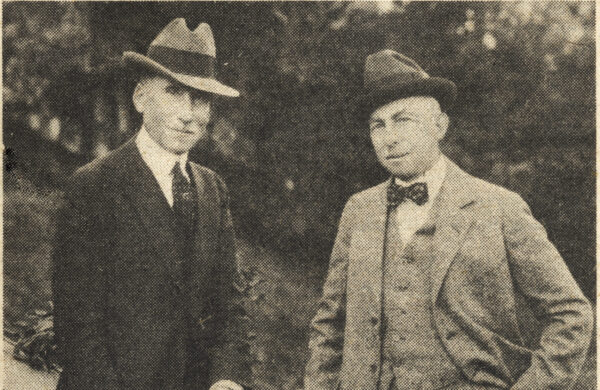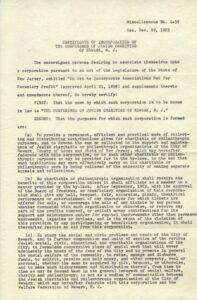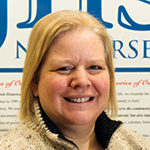
It’s not news to anyone that this is our Centennial year – and that 1923 was the year that the organization that would one day become Jewish Federation of Greater MetroWest NJ was officially incorporated. But one can’t tell that story without understanding the demographic growth within our region leading up to our formation.
In the early twentieth century, Newark had become an important city – its ports were one of the busiest on the east coast; the streets were filled with restaurants, businesses, and theaters; and trolley cars ran up and down the bustling corridors. The population grew as immigrants from South and Eastern Europe settled here, with distinctive Jewish neighborhoods along Prince Street in Newark’s Third Ward and further on to the Weequahic neighborhood.
Along with this rapid growth came the need for assistance for new arrivals, and organizations in the Jewish community were there to meet the needs of its constituents. Many organizations served distinctly different groups – for example the German Jews and the Eastern European Jews may have been catered to by separate immigrant benevolent organizations.
Overall, these agencies provided vital services to the growing Jewish population. If a newly arrived family needed help with job placement, the Ladies Immediate Relief Society stepped in. New mothers would receive assistance from the Hebrew Maternity Aid Society. Hebrew Free Loan Society’s slogan: “Help them to help themselves” was the core mission for the no-cost loans for their customers.
 Many of Newark’s major Jewish philanthropists were busy building institutions for the public – the Newark Public Library, the Newark Museum, Newark Beth Israel Hospital and the YM-YWHA. Among this group were two individuals, Felix Fuld and Louis Bamberger, who recognized the need to consolidate the efforts of the many Jewish agencies, ensuring that they would not need to compete for funds and eliminating duplication of services. They used their considerable influence to convince Newark’s Jews that the time was right to establish this umbrella organization.
Many of Newark’s major Jewish philanthropists were busy building institutions for the public – the Newark Public Library, the Newark Museum, Newark Beth Israel Hospital and the YM-YWHA. Among this group were two individuals, Felix Fuld and Louis Bamberger, who recognized the need to consolidate the efforts of the many Jewish agencies, ensuring that they would not need to compete for funds and eliminating duplication of services. They used their considerable influence to convince Newark’s Jews that the time was right to establish this umbrella organization.
After formalizing the parameters and mission of the organization, the Conference of Jewish Charities (the “Conference”) took place on November 16, 1923.
Three years later, the Conference undertook its first cooperative annual fundraising campaign to meet local, national, and overseas needs under the name United Jewish Appeal. This was the first time this name was used and, by 1939, the name was adopted by the national UJA organization.
Over the past 100 years, this organization has expanded and enhanced the services provided by the various agencies it supports and, in the words of a former president, Daniel Shiman, has served as “a vibrant, dynamic, representative central Jewish organization” for the community.
What’s particularly striking to me is that, as we embark on our second century, the mission established by our founders 100 years ago to help Jews in need locally, in Israel, and worldwide remains fundamentally unchanged. Through their forethought and deep commitment to supporting Jewish communal life, they created the thriving community that we’re all enjoying a century later.
I’m particularly proud to be part of The Jewish Historical Society which plays a critical role in preserving the precious stories of our community for future generations. As we celebrate our Federation’s Centennial anniversary, it’s more apparent than ever how imperative it is to have an archive full of historical materials to consult as we reference the past to guide the future.
We are currently seeking donors to provide matching funds for the digitization of Newark’s Jewish Chronicle. At the time of Federation’s founding, this was the paper of record for the Jewish community. Feel free to contact me or Karen Bocaletti to learn more about this important project.

